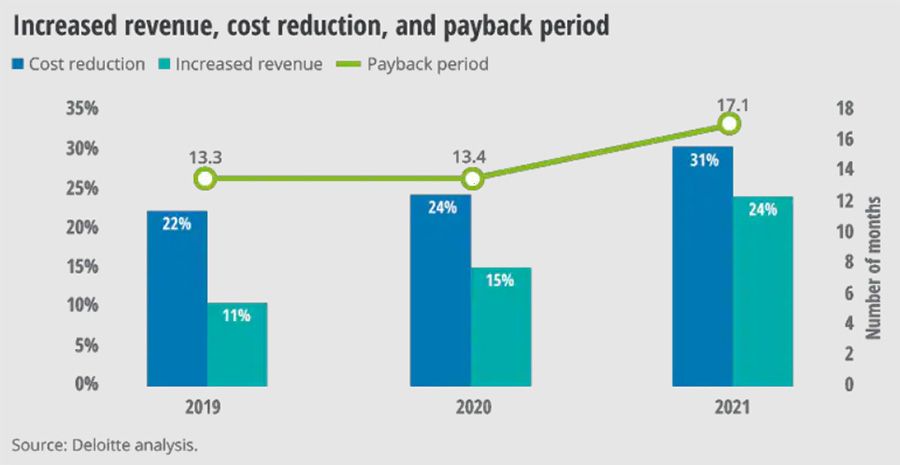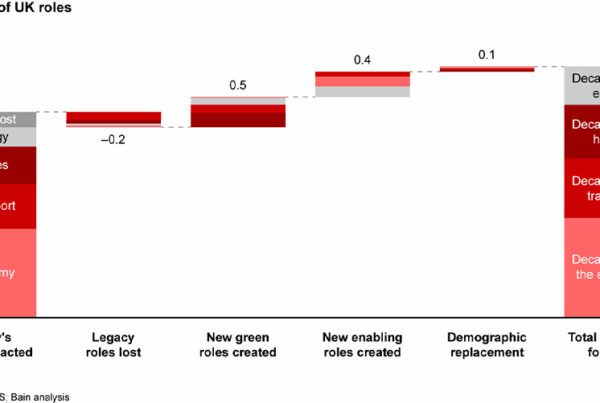A majority of business leaders suggest that remote working will cause see workers have to use more automation in their roles. However, lack of a clear vision, and a shortage of necessary skills represent barriers to realising that.
Beyond the lockdown months, remote working has remained very popular with workers across multiple industries. Organisations have increasingly adapted to allow at least some working from outside the office in their employees’ hybridised schedules – with those refusing facing the possibility of losing out on top talent, amid a tightening labour market.
This has brought challenges with it, however. With many firms still looking to find new ways of supporting work from home while also maximising productivity, some are turning to automated technologies for help.
To that end, a new survey of 479 executives in 35 countries has shown that around 78% of organisations worldwide agree that remote working will increase the proportion of their organisation’s workforce using automation in their roles – up from 65% in 2020. And this is no longer hypothetical either. Deloitte researchers found that 71% of organisations were already using automation technology to some extent, with 13% using automation at scale.

David Wright, partner in Deloitte’s Intelligent Automation team, said, “With organisations adapting to a changing business landscape, remote working for many has become the ‘new normal’. Automation is playing a crucial role in enabling greater productivity, no matter where a workforce is based. Whether it’s responding to basic queries or streamlining workflows to allow more time for collaboration, intelligent automation is here to stay. The task now will be upskilling and training the workforce to adapt to these new technologies so that everyone can benefit from them.”
Many of that 71% of organisations now using automation are beginning to feel the benefits. Some 89% of business leaders agreed that the implementation of their intelligent automation strategy had met or exceeded their expectations of improved productivity, with 88% saying that it had met or exceeded their expectations of improved accuracy. Meanwhile, one-quarter said they had seen increased revenues on the back of this.
But while businesses are keen to deploy technology as they adapt to new ways of working, that is seen as being easier said than done by most bosses. A majority of 55% of business leaders told Deloitte that a lack of skills and experience is a significant barrier to implementing a wider range of intelligent automation technologies in their organisation.

This was a significant increase on a 2020 survey by Deloitte, which found that cost to implement was seen as a much bigger problem for automation. At the same time, however, a number of other hurdles are still perceived as greater to the execution of new AI strategies.
Number one on the list – as it has been consistently since 2018 – was the concept of process fragmentation. With their mechanisation, some leaders fear some processes will become difficult to manage in a unified manner. Meanwhile, the second-highest cited fear was a lack of a clear vision for implementation – rising markedly since 2020. Organisations need to have a vision and strategy for intelligent automation to succeed, but 22% do not have a clear and accepted vision for intelligent automation, and 41% do not have an enterprise-wide intelligent automation strategy.
Wright added, “Adoption of new technologies may be seen as daunting for some organisations who are facing a big change to the way their business operates. However, we are seeing positive feedback from business leaders who say that automation is already having real-time benefits in scaling, productivity and improving resilience. There are also high expectations for further improvements as a result of implementing intelligent automation strategies, which we will hopefully see developing across all sectors and organisations in the near future.”




